From The Frontlines…
How To Be A Professional Content Creator: The Ultimate Guide
In this guide, you’ll learn:
- What it takes to be a professional content creator
- The reality of doing it full-time, for a living and the skills you need
- How to find a niche and what to avoid when choosing your area of expertise
- The different mediums used by content creators: blogs, newsletters, video, podcasts and how they compare
- How to weaponize your knowledge and skills into a digital product
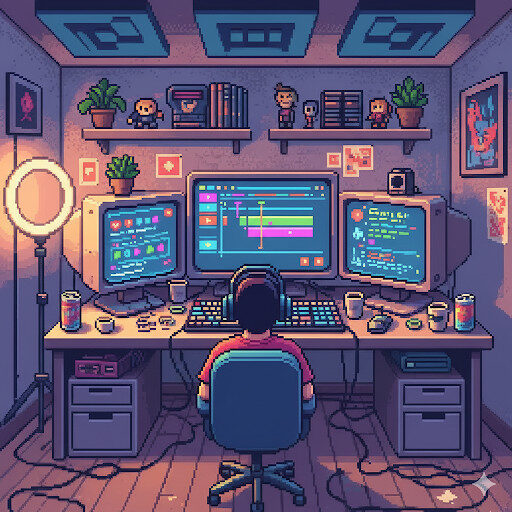

Written by
Can You Earn A Living As A Content Creator?
For years, a handful of giant media companies controlled the information flow online. The barriers to entry were massive and the costs enormous.
Now? Anyone with a phone and a good idea can launch their own media empire. And the best part? You don’t even need a website to do it.
The people that do this are called “content creators,” and they’re powering one of the fastest-growing cottage industries ever: the creator economy.
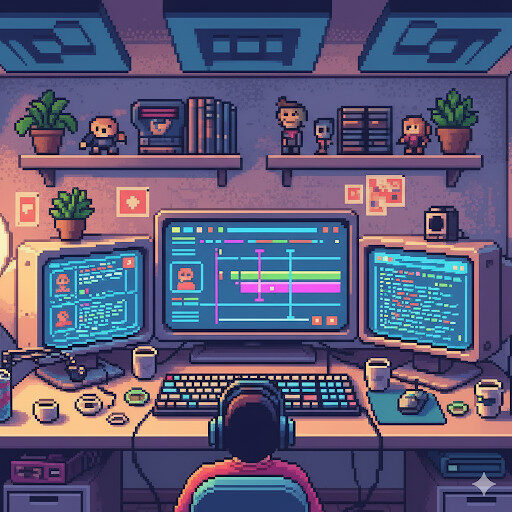
If you’re interested in joining them, this article pulls together everything I’ve learnt over the past 15 years of being a professional content creator.
And while it is true that anybody can make a living as a content creator, please do keep in mind that like anything else it is bloody difficult.
The fantasy sold by many gurus on YouTube and elsewhere is just that: a fantasy.
Making $10,000 a month isn’t impossible but it’s also no cakewalk. You need to be prepared to work a lot, way more than you would in a 9 to 5 job, and you really need to enjoy learning new things because there’s always new stuff to learn.
But if that sounds like the kind of thing you like, read on because this post (it’s a long one, I’m afraid) covers literally everything you need to know about how to become a mildly successful content creator.
Let’s go.
What Exactly Is a Content Creator?
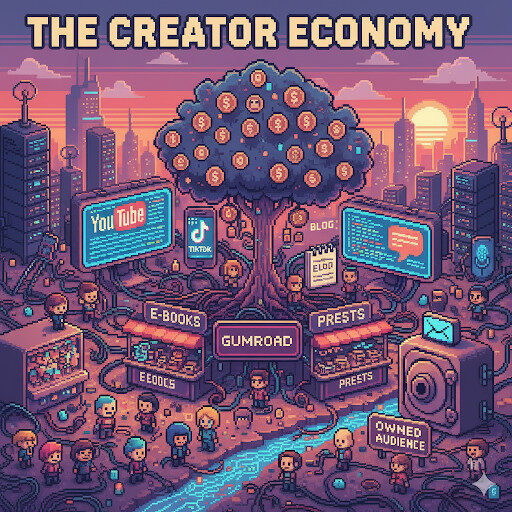
A content creator is anyone who produces and distributes media online. Duh!
That “Media” could be anything of the following things:
- A blog post
- A Medium article
- A YouTube Video
- A podcast
- A tweet or Facebooks post
- A newsletter
- A live stream
I’m a content creator because I run websites (like this one) and other projects (like this one, and this one).
I cut my teeth as a journalist, then learned SEO and content marketing, then launched a few projects in the late-2000s, and now I kind of just mangle all my skills together across a range of different things.
Back when I was at school (1995 to 2000), teachers said we’d have multiple jobs when we entered the work force, that fixed career paths were going the way of the dinosaurs.
Turns out they weren’t wrong. As a content creator, you have to wear many professional hats.
You need to be a data analyst, a conversion rate specialist, an excellent communicator, a good copywriter, have an eye for design and aesthetics, be able to research topics, and you also need to be creative.
Since 2014, content creation is how I’ve made a living. It’s paid for my house, my car, my bills, and everything in between for over a decade now.
Is it easy? No.
Do you have to work a lot? Yes.
Would I do anything else? Absolutely not.
Plus, the skills you learn on the job are transferable as well.
I run this site, it started out being about phones and tech. Nowadays, it’s more about what you can do with phones and tech because that’s just more interesting to me.
But I also run a content marketing agency (OPTIMALSAUCE), where I help start-ups, SMEs and small brands reach bigger audiences using the playbooks and skills I developed and honed building this site and my other projects.
Your journey as a content creator will almost certainly be different to mine. But it’s important to remember: you don’t need to run a website to be a creator.
You can do it via social media, or a newsletter, YouTube or even LinkedIn. The important thing is that you get your followers onto your email list.
This is so important I’m going to say multiple times throughout this post. You have been warned.
The most common (or well known) types of content creators include:
- A gamer live-streaming on Twitch.
- A financial analyst writing a newsletter on Substack.
- A chef teaching cooking on TikTok.
- NSFW OnlyFans creators
- An artist selling presets on Gumroad.
The internet’s a big place, so there’s room for everyone.
All you have to do is find something you’re interested in that could be turned into a business.
Sounds easy, right? It’s not. Not all niches (interests and topics) are easy to monetize or market.
That’s why choosing your niche is super important, so take your time.
Finding Your Niche: Or, Monetizing Your Obsessions

Examples of Niches:
- Broad Niche: Fitness, finance, travel, tech, gaming.
- Micro-Niche: Plant-based meal prep for busy parents, productivity hacks for college students, retro gaming console restoration.
This is the most important step. Don’t start posting until you’ve figured this out.
Your niche is your area of expertise. It’s what you’ll be known for.
Think of it like a business plan. You wouldn’t open a store that sells “everything.” You’d specialize in something.
It’s also best to avoid broad niches; they’re over-subscribed already and dominated by big, established players.
Keep this statement in mind: the riches are in the niches.
This means go niche, the nicher (yes, that is a word) the better. The ideal spot is a niche within an already-popular niche.
If you’re into finance, for instance, go for something like finance for single moms who make a living as creators.
PRO TIP: Go with a micro-niche. It’s easier to stand out. You’ll become the go-to expert for a specific audience, which means higher engagement and a more loyal following.
And whatever you do, pick something you’re actually passionate about. If you’re just in it for the money, you’ll run outta steam quickly.
Success in this game takes YEARS not months, so you better care about what you’re working on.
That’s why I transformed this site from simply talking about phones to exploring how you can use them, and other connected tech, to create, build, and grow as a creator.
Your energy and authenticity is your secret weapon; people buy from people they trust and have a rapport with, so focus on delivering value and only promoting what you actually use, know, and understand.
Step 2: Pick Your Platform (Where Your Audience Lives)
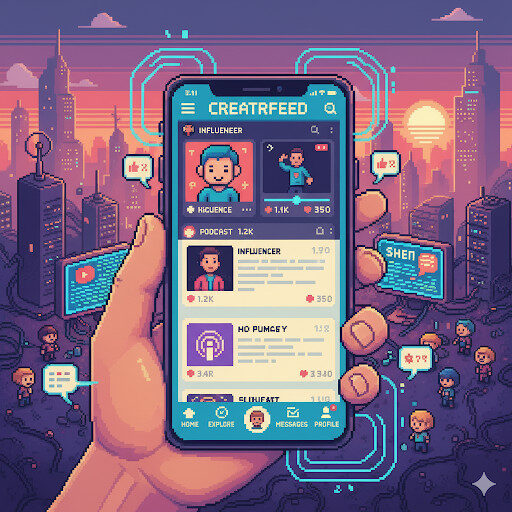
You can’t be everywhere at once.
The smartest creators start with one platform, master it, then expand. That could be X, or Instagram, or, if you’re like me and you enjoy pain and suffering, organic SEO with blogs.
I’ve always liked writing, so running sites was my go-to with a bit of social media and a newsletter.
But I’m old-school in this context. Nowadays, the vast majority of content creators are doing it via social media platforms.
Just keep in mind that if your entire audience is made up of followers on TikTok or YouTube, they’re not your audience. You’re just renting them off the platform’s owner.
This is why one of the most important skills a content creator can learn is how to turn followers into email subscribers.
For those of you just starting out, here’s the breakdown of the most popular platforms for content creators:
- TikTok: The rocket ship. Massive reach, short videos, and a powerful algorithm that can make you go viral overnight.
- Instagram: The visual powerhouse. Perfect for lifestyle, fashion, and photography niches. Reels and Stories are the name of the game.
- YouTube: The long game. Best for long-form video tutorials, deep dives, and educational content. High monetization potential through ad revenue.
- Twitch: The live show. Built for gamers, but expanding into music, art, and “just chatting.” It’s all about real-time interaction.
- Your Own Blog: Your digital headquarters. You own the content, you control the traffic, and you can build a long-term asset. Great for SEO and attracting organic search traffic.
- Newsletter: Your direct line to the people. Building an email list is the single best way to secure your audience and protect yourself from platform changes.
THE GOLDEN RULE: Always, always, always aim to move your followers from a third-party platform (like TikTok) to an owned platform (like your email list).
Choose Your Content Format (The Medium is the Message)

Content isn’t just the written word. It can be videos, a podcast, or images. You need to find out which one is best suited to you.
If you don’t like being on video, a blog or newsletter or some other medium for writing is likely the best route.
But don’t be worried about doing video, plenty of successful creators do video and never show their faces.
You just have to get creative with the production.
How you communicate with your audience is key, and right now these are the main mediums through which you can do content online:
- Video: The engagement king. Think YouTube, TikTok, and Instagram Reels.
- Text: The OG. Blogs, newsletters, LinkedIn articles. Perfect for in-depth analysis.
- Audio: The intimacy builder. Podcasts and voiceovers let you connect on a personal level.
- Visual: The quick hit. Photography, infographics, and memes.
The Repurpose Hack: Don’t reinvent the wheel. Film a 10-minute YouTube video, then cut it into 5 short clips for TikTok and Reels, and use the transcript to write a blog post. One idea, multiple pieces of content.
Build a Workflow (Consistency > Perfection)
- Plan: Use a simple tool like Notion, Obsidian, Notebook LLM or a Google Sheet to plan your content for the next week or month.
- Batch: Set aside a few hours to create multiple pieces of content at once. Film all your videos on Saturday, then edit them throughout the week.
- Simplify: You don’t need a fancy camera. Your phone is more than enough to start. Use simple editing apps like the one included for free inside your phone.
Even with the best will in the world, most people (myself included) are incredibly unorganized.
You don’t need to be Mary Poppins about your scheduling and planning, but having a place where you make notes and keep track of things is going to help in the short, medium, and long term.
I use Obsidian; it’s an open-source note-taking platform. I used to use Notion but I find it too busy, too distracting.
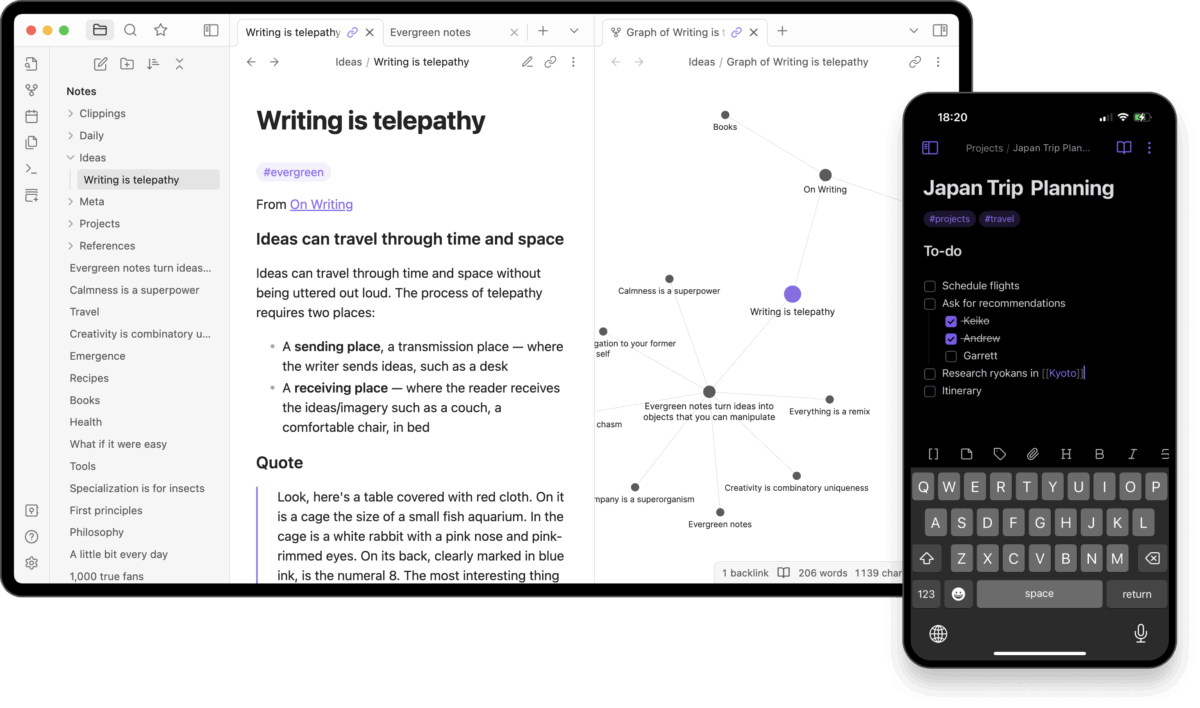
Obsidian is cleaner and has less features which makes it far less distracting to work inside.
If I have an idea, it goes in my idea folder. If I do some research, it goes in my research folder.
Google’s Notebook LLM is also very good for this if you want some AI assistance.
Master Audience Growth (It’s a Science)

Basics You Need To Do
- Post Consistently: The algorithm rewards frequency. Don’t ghost your audience.
- Engage: Reply to every comment, answer DMs, and run polls. Your audience is your biggest asset.
- Collaborate: Find other creators in your niche and partner up. A simple shout-out or cross-promotion can introduce you to a whole new audience.
- Focus on Engagement: Likes and views are nice, but comments, shares, and saves are the real currency. A small, hyper-engaged audience is infinitely more valuable than a huge, inactive one.
Growth is a weird thing. You want steady growth but you also don’t want to get bogged down by vanity metrics.
My advice in this regard is to just go out there and starting testing content formats.
Don’t get upset when stuff doesn’t work, try something else.
Do this for a month, and then see what landed and what didn’t.
Don’t overthink it too much. Novelty and your individual presentation style is what’s going to move the needle in most cases.
Don’t follow trends, don’t copy other creators. Focus on being yourself, being original, and making sure the information your presenting (even if it isn’t new) has a twist that is uniquely you.
For instance, say you’re a WordPress creator. You could do something about how you use ACF and this one, unknown free plugin to quickly build-out dynamic directory sites.
ACF isn’t new. Directory sites are nothing new. But that angle? It’s got a unique twist, it’s specific, and it is positioned as actionable information for certain types of users.
The best kind of growth is organic, natural growth through things like word of mouth and people sharing your content. If you blog, it could be comments, email signups, and backlinks from other sites.
The type of content that attracts this type of thing is helpful content that is actionable, not rehashed stuff that an AI could spew out in 10 seconds.
Always remember this as your audience grows: more subscribers and traffic are only valuable if they generate revenue otherwise, they’re just costly vanity metrics.
You’re better off having 20 rabid fans that love everything you do and jump on every new offer and product you release, than 10,000 followers who couldn’t care less about you.
Monetize Your Content (Make It a Business)

Here’s a free tip: before you begin building out your media empire, have a long, hard think about how you will monetize it.
Followers and shares and likes are great, but they don’t pay the bills. If you’re in this for the long haul, you need a monetization strategy. Ideally, a few of them.
All successful creators DO NOT rely on one source of revenue, that’s called putting all your eggs in one basket, and it is a recipe for disaster as many site owners found out in the wake of Google’s HCU roll-out in 2023.
When it comes to making money as a creator, these are the usual suspects for monetization:
- Ad Revenue: The “classic” way. Think YouTube Partner Program and TikTok’s Creativity Program.
- Brand Sponsorships: Paid partnerships with brands. This is where most creators make the bulk of their money.
- Affiliate Marketing: You recommend a product, share a link, and earn a commission on every sale.
- Digital Products: Your own eBooks, templates, courses, or presets. This is the holy grail.
- Memberships: Patreon, Ko-fi, or Substack. Your superfans pay a monthly fee for exclusive content.
- Freelance & Services: Sell your skills directly—coaching, consulting, or done-for-you services.
My advice? Don’t rely on advertising for income.
It takes a huge amount of traffic to earn anything meaningful, and when you’re starting out, reaching that scale is nearly impossible.
If you’re doing YouTube, enable monetization it as soon as you can but don’t make it your main income stream.
Digital products and growing your email list should be your number one priority.
If you’re blogging with a site, I’d avoid ads altogether. You’ll need 500,000+ visitors a month to make it worth your while, and ads ruin the UX of your site.
Plus, users hate them.
I’m currently in the process of removing all programmatic ads from this site.
I can’t do it right away because they pay the bills, but by this time next year I want the entire platform ad-free.
In place of ads, I’ll be focusing on things like brand partnerships and digital products.
If you’re just getting started with content creation, focus on affiliate marketing and digital products.
Neither require scale to work, and with digital products you can make a lot of money very quickly with the right content marketing and some simple landing pages.
Just make sure you’re constantly building your list.
The Holy Grail – Selling Digital Products

My best advice to anyone starting along this path is to ALWAYS be thinking about digital products.
What can you create that no one else could? What do you know more about than anyone else? What unique spin / approach do you have on an established way of doing something?
For example, a good friend of mine is a runner.
She has been running marathons for years and she’s incredible at it.
I run too, but I’ve always been awful.
No matter how often I trained, I never seemed to get better.
I asked her about it one day and she explained her unique approach to training.
I had never heard anything like it before, and it sounded so unusual that I decided to try it.
It worked.
My times dropped, I got faster every week, and now I’m ten times better at running than I was a year ago.
Her method, the training system she developed herself, is the perfect example of something that could become a great digital product.
Platforms To Start With
- Gumroad: The simplest way to start.
- Lemon Squeezy: Great for creators selling globally.
- Shopify/Squarespace: For total control and custom branding.
- Substack: For paid newsletters and subscriptions.
My advice? Get a domain, set up a site (Squarespace is the simplest), then work on building out your email list (Squarespace includes email / newsletter functionality out of the box).
Essential Tools for Creators
You don’t need hundreds of tools to be a content creator, less is always more and each tool you use should justify itself with appreciable ROI.
Tools and software can get expensive fast, as our case study of 20 Shopify stores illustrated. You don’t want to be spending $1000+ a month on tools unless you’re making north of $10,000.
Here’s all the tools I use and recommend. You don’t need any or all of them but some will be helpful, so if one catches your eye, check it out.
Overcoming the Creator Grind (The Dark Side)
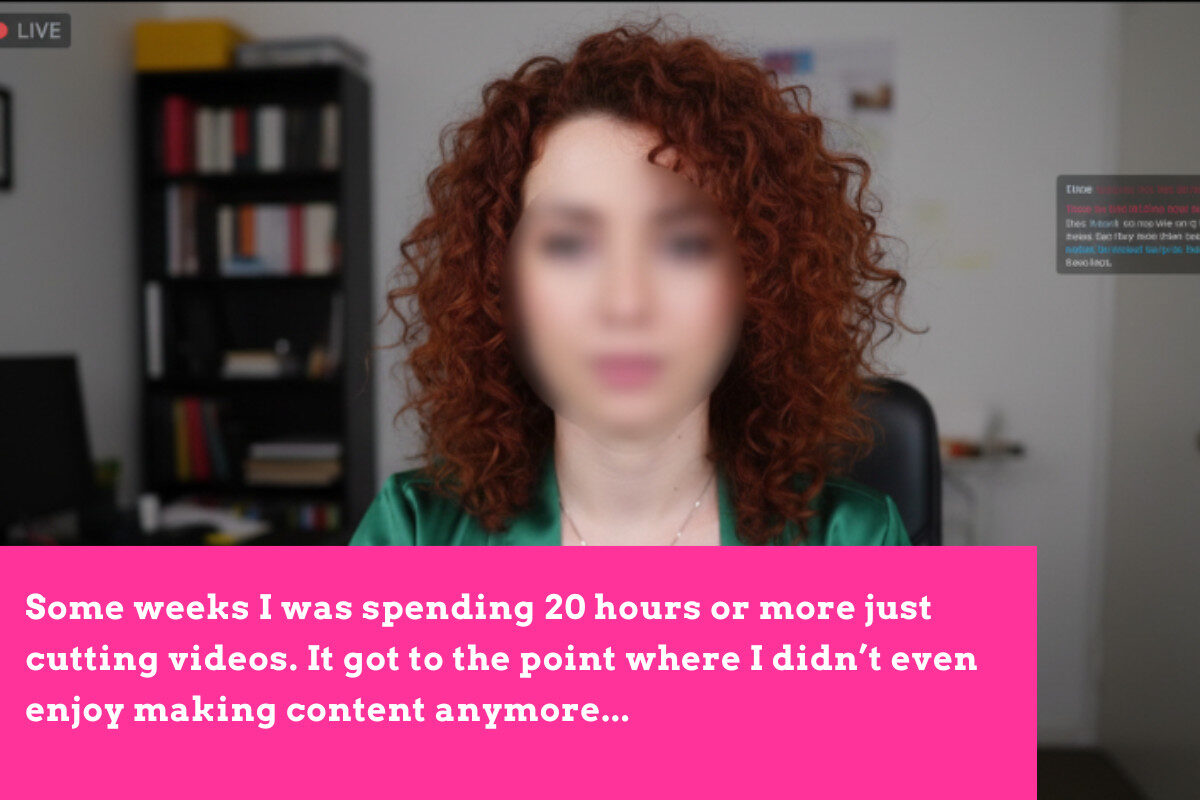
- Burnout: The biggest threat. Don’t post every single day if it means sacrificing your mental health. Quality over quantity always wins.
- Algorithm Dependence: Your reach can drop overnight. Diversify your platforms and build that email list.
- Trolls and Copycats: The bigger you get, the more this happens. Ignore them. Your focus is on your audience, not the haters.
Content creation is a marathon, not a sprint. The grind is real, though, and burnout can and does happen.
I spoke to a popular OnlyFans creator about burnout and how it affected her, we discussed things like work-life balance and the power of outsourcing tasks.
When you’re the boss and the puck stops with you, things can get stressful. Back in 2023, when Google nuked the entire open web, I watched 70% of my revenue go down the toilet over night.
I had to let people go, people I was friends with and had known for over a decade. It’s wasn’t pleasant.
But stuff like this happens all the time, so you need to have thick skin and a Stoic, can-do attitude because there will be dark times.
The Future of the Creator Economy: Or, How Not To Enshitify The Web
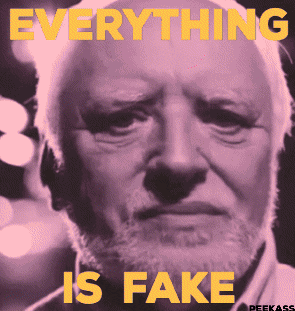
The creator economy is booming, generating tens of billions a quarter.
Powered mostly by the rise of social media platforms like TikTok and easy to use tools like Squarespace and Wix, starting a business or brand has never been easier.
AI makes things especially easy but you need to be careful how you use it.
I see far too many creators handing over every aspect of their creative process to Claude or ChatGPT.
Use AI, of course, but use it as an assistant, a tool. It shouldn’t be doing all of your work and all of your thinking too.
If you’re doing written content, write it yourself. Use AI to spot gaps, weak points, but make sure you do the creative writing part yourself.
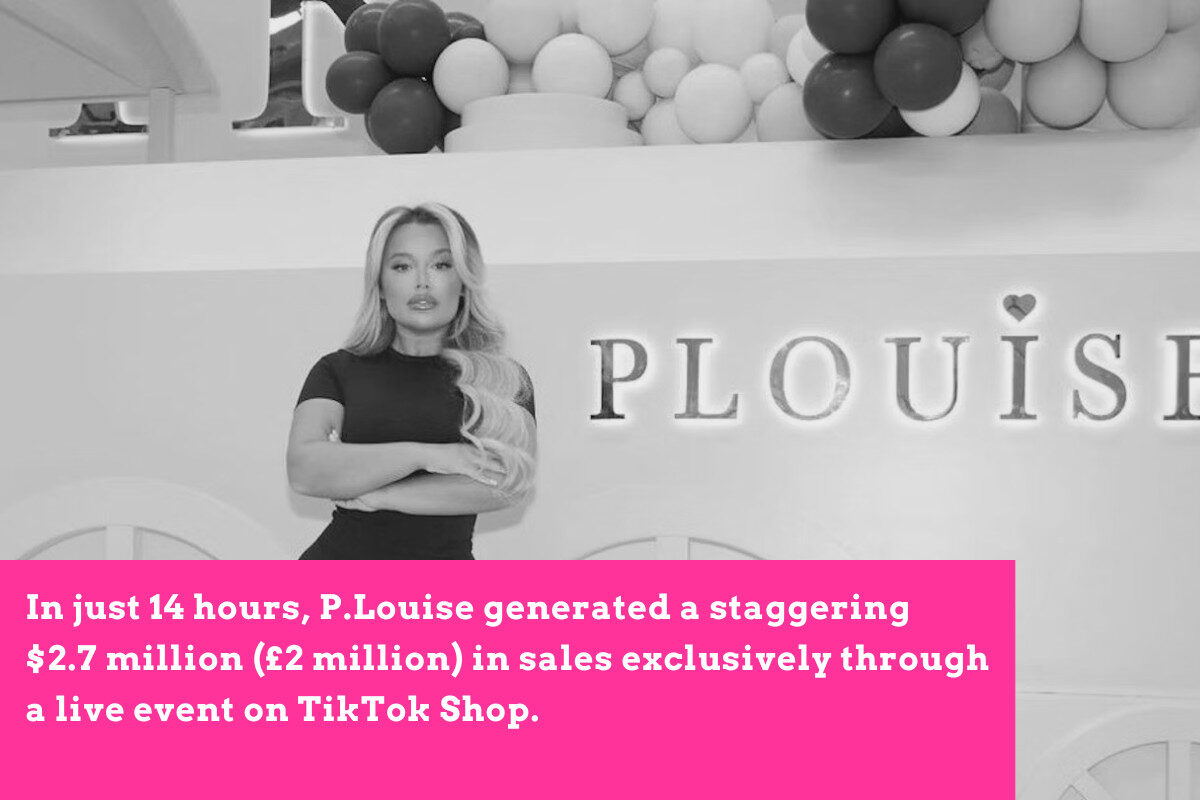
People can tell the difference and it does have a negative effect on conversions. This is a fact.
I use AI for research, for coding, proof-reading, analysing large data sets, and for images (all of the images, save for a couple, in this post were generated by Gemini) but it is never calling the shots.
The thing that’ll make you successful as a creator isn’t speed or the amount you do; it’s your unique approach to how to do things, how you communicate, and how you explain things. Your personality.
And you need to let it come through in whatever medium you’re working in, whether it is the written word or text.
If you hand that over to an AI model, your uniqueness is diminished and your content, whether it’s video or text-based, will suffer.
The hard way is always the best way when it comes to the creative process. You need to be constantly training your grey matter. If you’re not, you’ll lose your edge and your content will suck.
- How To Be A Professional Content Creator: The Ultimate Guide
- Can You Earn A Living As A Content Creator?
- What Exactly Is a Content Creator?
- Finding Your Niche: Or, Monetizing Your Obsessions
- Step 2: Pick Your Platform (Where Your Audience Lives)
- Choose Your Content Format (The Medium is the Message)
- Build a Workflow (Consistency > Perfection)
- Master Audience Growth (It’s a Science)
- Monetize Your Content (Make It a Business)
- The Holy Grail – Selling Digital Products
- Essential Tools for Creators
- Overcoming the Creator Grind (The Dark Side)
- The Future of the Creator Economy: Or, How Not To Enshitify The Web
Follow us